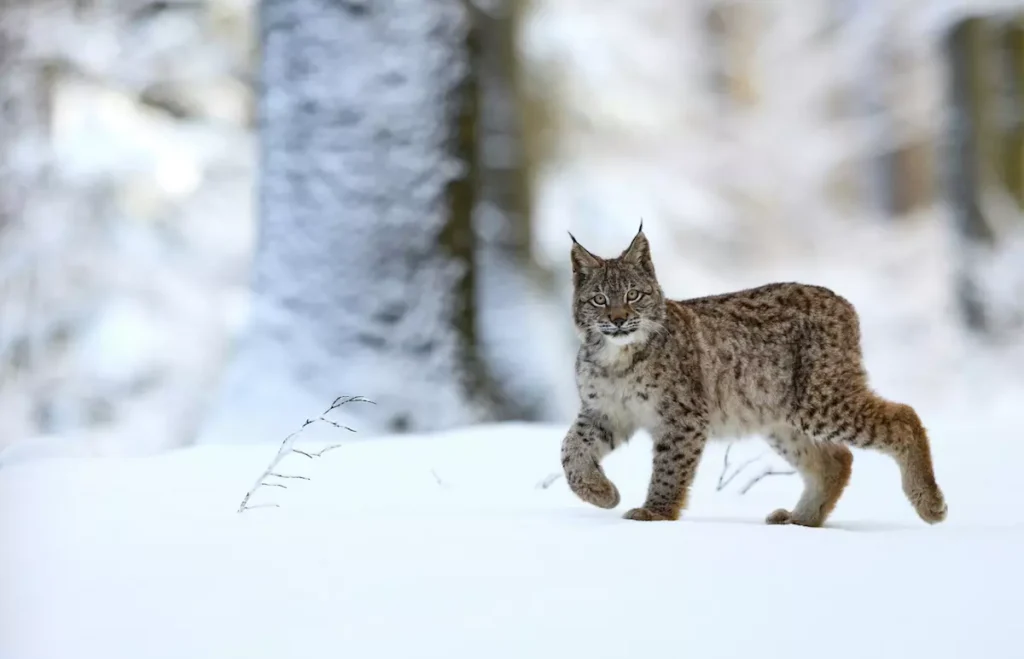An estimated 2,000 Colorado bobcats are trapped for fur to sell on the foreign market every year
Colorado — Cats Aren’t Trophies (CATs) reacted to news that bobcat trappers illegally caught and killed a lynx in northwest Montana by reminding Coloradans that lynx remain at heightened risk for injury and death from bobcat traps in Colorado.
CATs is a political committee in Colorado that has filed 2024 ballot language to ban fur trapping of bobcats and trophy hunting of mountain lions. The measure protects lynx, because they have been caught in bobcat traps and killed.

According to NBC Montana, on Dec. 27, one lynx was found dead in the trap, and the other was released the next day.
Christine Capaldo, a veterinarian in Southwestern Colorado offers this statement:
“Lynx, a close relative to bobcats, are naturally attracted to bait set for bobcats and are harmed, injured, or killed when caught in traps. Trapping bobcats causes unnecessary pain and suffering to the target animal and also to non-target animals that includes lynx. Please join me to end the archaic and cruel bobcat trapping fur trade in Colorado.”
Brett Ochs is a Colorado big game hunter, and offers this statement:
“As a member of Colorado’s big game hunting community, I own the responsibility to speak out for ethical hunting, and against the unfair, indiscriminate killing of wildlife, Trapping bobcats just to sell their fur to China or Russia goes mightily against the North American Model of Wildlife Management, as it is devoid of fair chase, and our wildlife should not be killed for commerce. The fact lynx are getting caught in these traps is horrendous.”
Bobcat Trapping Facts:
Colorado allows bobcats to be unethically chased by dog packs – just like mountain lions – and shot for recreation. The large majority of bobcats – about 2,000 each year – will die at the hands of a fur trapper, however, who will make $1,000 on a foreign market in China or Russia.
With a “furbearer” license around $30, trappers may kill as many bobcats as they want seasonally. They set thousands of traps in our wildlands every year – 4,000 one year alone – and are asked to check traps just once every 24 hours.
There’s no database tracking how many animals, or what kind of non-target animals have been trapped, injured, or killed in bobcat traps. We know that wild animals including bald eagles and domestic pets can and have been caught, injured, and killed due to exposure to the elements or while struggling to escape.
There is nothing to prevent mothers with dependent young from being trapped and killed, leaving orphans behind. Both bobcats and mountain lions can and do breed any time of year.
None of it makes any sense, because not only do we not know how many bobcats live in Colorado, but they are not the sole property of fur trappers, who are doing so much damage.
Inhumane and unaccountable methods
Historically most bobcats are killed by strangulation from a “choke stick,” poison, or bludgeoning to death, because trappers say they like to preserve the cleanest pelt. Any rifle, handgun, shotgun, handheld bows, crossbows, or any air gun pre-charged can be used to kill a trapped bobcat on site, according to state guidelines. But there are clear allowances today in Colorado for trappers who wish to bludgeon a bobcat to death and keep the pelt clean from blood that spills after the cat is shot. There is zero oversight of the process in the field.
Trapping unlimited bobcats when we have no statewide data or population count isn’t managing anything, not even trappers.
Fur trappers are nothing worth conserving. Consider that 700 trappers kill bobcats each year (0.01% of all Coloradans), and yet they contribute to the largest cause for bobcat mortality.
Summary:
TROPHY HUNTING, TRAPPING AND KILLING BOBCATS: THE METHODS
Hounding And Baiting
The large majority are baited, caught in live cage traps, then killed, for the personal profit of selling the fur on the foreign fur fashion industry market in Russia and China.
Any rifle, handgun, shotgun, handheld bows, crossbows, or any air gun pre-charged can be used to kill a trapped bobcat on site, according to state guidelines. There is zero oversight of the process in the field.
Strangling, Poison And Bludgeoning
Historically most bobcats are killed by strangulation from a “choke stick,” poison, or bludgeoning to death, because trappers say they like to preserve the cleanest pelt.

